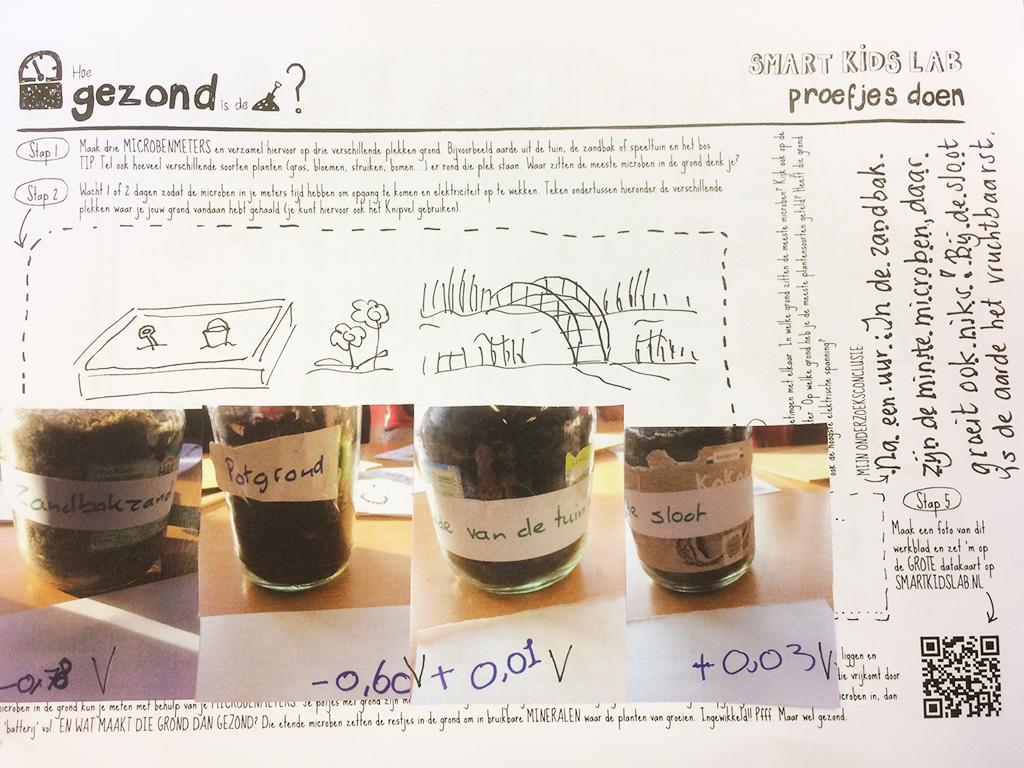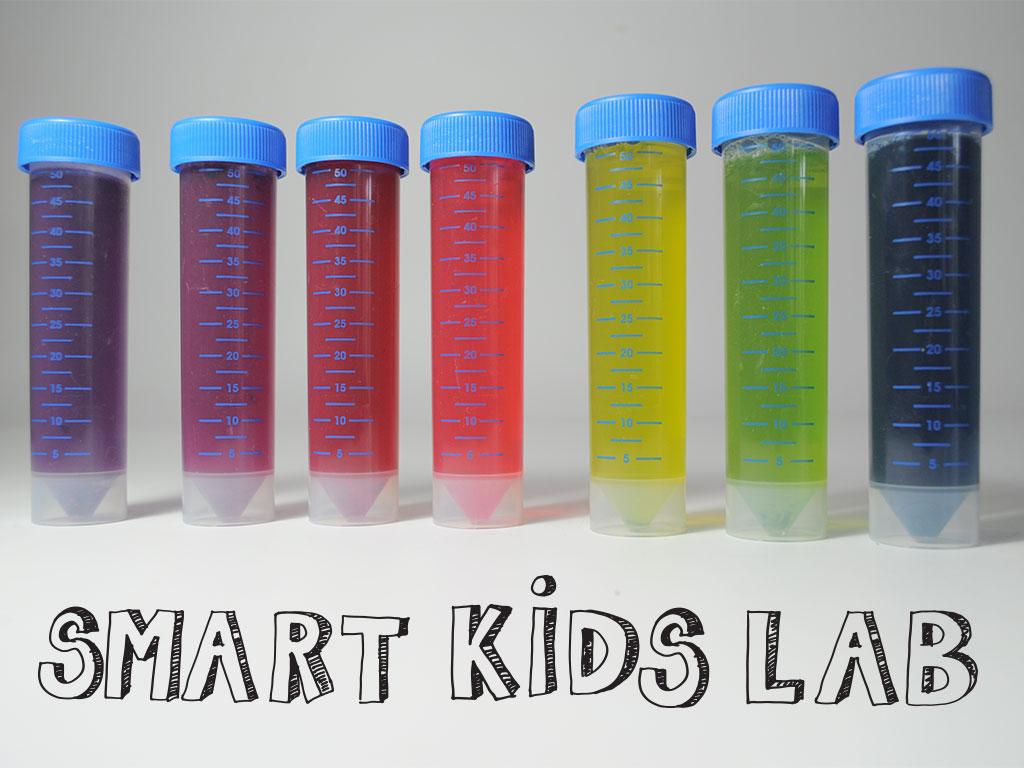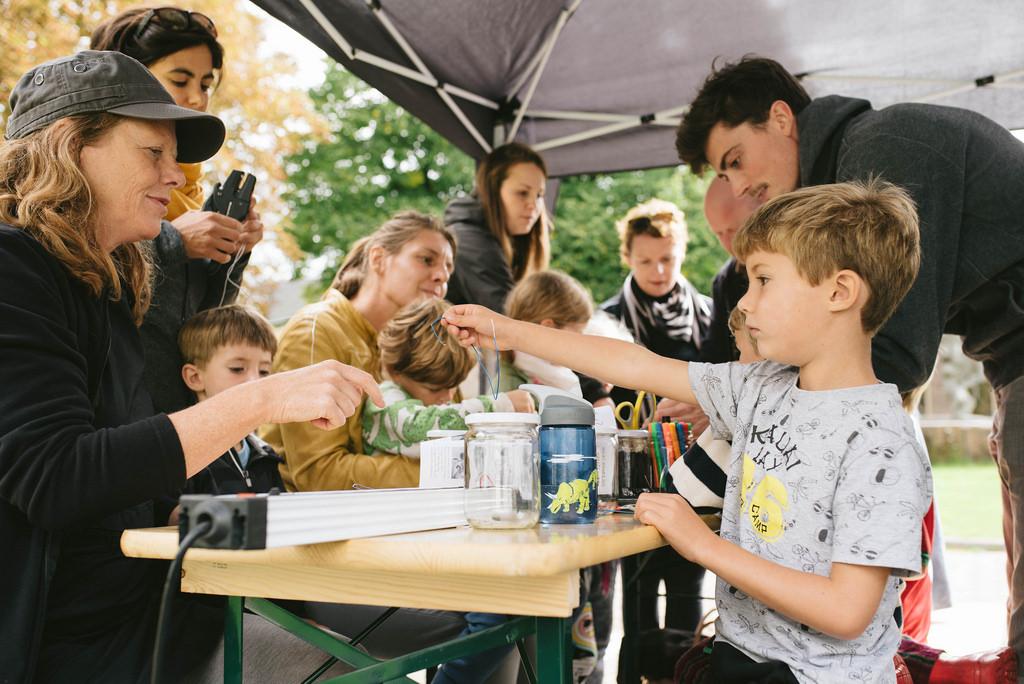Suzanne van Lier & Joke de Hoogh, teachers at the elementary school de Regenboog in Amsterdam, told us about the experience with Smart Kids Lab in her lessons. Smart Kids Lab is part of Making Sense, a European project that stimulates citizens to measure the quality of their environment.
This week we worked on our research for the Smart Kids Lab again. We looked back at the results of our investigations into fine particulate matter. It turned out that, in general, the particulate matter isn't too bad in our neighbourhood. The particulates meter I left for a week or two on the front of my car, however, measured quite a lot of fine particulates in the air. So let's try not to go walking or cycling on the highway! I'd recommend staying in our green area for outdoor play.
We also talked to each other about the microorganisms that form the base of the waste cycle. These microbes ensure that natural waste (like fallen leaves and the feces of animals and humans) are broken down and converted into nutrients to help plants grow. Then animals and people eat the plants, which completes the cycle. We wondered how many microbes we'd find in the ground around our neighbourhood? And would there be a difference between soil from the garden that Mr. Rob's room cares for (where new plants were just planted) and the soil in the ditch outside? Microbes produce a small amount of energy. So, with a very sensitive meter, you can see whether there are a lot or just a few microbes in the soil.
We also talked about the minerals found in the water in our environment. Having enough minerals in the water is important for biodiversity in the area, but too many minerals can have negative effects. To measure the amount of minerals in the water, we needed to place a special meter in a passing stream.
So both studies required special measuring devices. To compare the two types of soil microbes, we needed two microbe meters. And to measure several different water sources, we needed a mineral meter. In groups of three or four kids, we got to work making the meters ourselves—which was quite a job. There were many steps in the process and a lot of materials and techniques we knew nothing about. How do you strip an electrical wire? What does 'stripping' mean in this context (hint: it's not taking off your clothes)? Which side is the negative side of the battery? And, perhaps the most interesting question: what in the world is a soldering iron? With great care and attention, the children got to work. They particularly enjoyed the moment when the solder began to melt as they held it against the tip of a hot soldering iron. Then, after a few moments, the molten solder was rock hard again! It was like magic!
When building these meters do you really have enough hands to connect all the wires and gauges by yourself? Fortunately, our students could count on the extra hands of the other children in their groups. You know more together than your own. Try to improve, to change, and to try again. Eventually, you'll come out on the other side!
Of course, now we need to collect the materials to be measured. We decided to compare soil from the garden with the soil from the ditch. Our hypothesis was that the soil in the ditch would contain more microbes because there are more animal droppings left behind. As for the water, we decided to compare plain tap water with salt water, soapy water, and ditch water. Our hypothesis in this case was that the salt water would contain the most minerals and tap water would contain the least. Would the ditch water have more minerals than the soapy water? That was something we'd find out through experimentation. Of course, since this was the only week this winter that the temperatures dropped below freezing, it looked like it would be difficult to obtain our soil and water samples. We had to do a lot of digging in frozen ground and chopping through ice to get our research materials. Fortunately, our brains work well in cold conditions and we managed to retrieve our ditch water from under the ice.
Our hypothesis concerning the soil didn't quite add up, and the outcome wasn't clear. If anything was clear, it was that the soil in the ditch appeared to contain fewer microbes than the soil from the garden. Maybe the microbes hadn't produced enough energy to be detected? Maybe it was so cold outside that the microbes were frozen? Maybe the ground was a little warmer near the school?
We also took some soil measurements with our afternoon group. With their measurements, it was obvious that the sand from the sandbox contains very few microbes, and the soil from a flower pot in the school contains much less than the ground outside. We weren't expecting that. Isn't potting soil supposed to be formulated to grow good plants?
We've now uploaded our measurements of acidity onto the website. And we're working on collecting our measurements of noise and particulate matter to put on the site as well. One last interesting measurement we wanted to share with you is that the meter we placed by the teachers' smoking area caught a good deal of fine particulates. So we advise you to just stay away!


